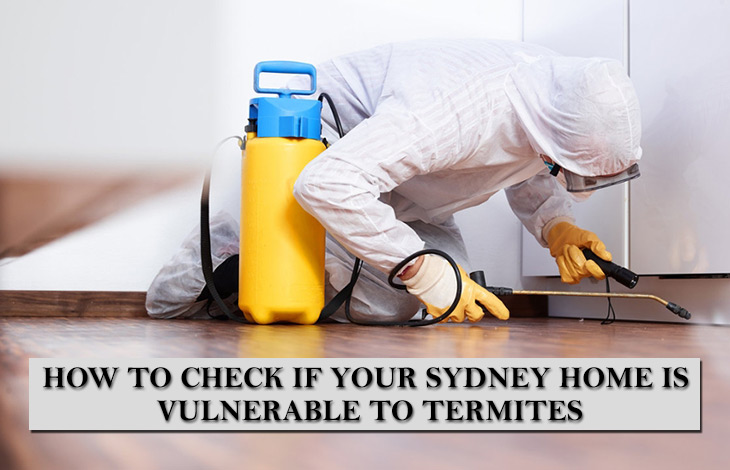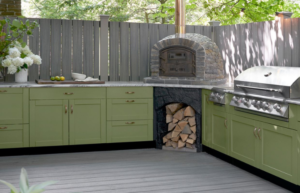How To Check If Your Home Is Vulnerable To Termites

Termites are strange creatures. Unlike other colony-based insects that have designated royalty, termites are equal opportunity. This means any pair of termites can mate, becoming the reigning monarchs of their own colony. This usually happens when it rains. Loads of winged termites fly out of the mound, dance around in the rain, and shed their wings.
Many of these little ‘fairies’ fall to the ground and die, soaked in mud or trampled by shoes and wild feet. Others get eaten by birds, bats, and reptiles, which can’t be a fun way to go. But the smarter, faster, cleverer ones pair up. They make cosy little honeymoon suites out of soil, saliva, waste, and skin cells, then they settle down and start having babies. This becomes a new colony, and it’s part of the reason why termites are so risky.
They breed faster than rabbits, and that’s saying a lot. Apart from their rampant reproduction, termites can be quite harmful. It’s not intended as malevolent. They just eat a lot and lay a lot. So a colony of termites can eat through one foot of wood in between two and six months, depending on the time of year. (Summer is peak termite season in many parts of Australia, so it’s not just the humans organising sultry parties.) It’s hard to spot infestations on your own, so it’s crucial to invite your local experts for some pest treatment in Brisbane.
Signs And Symptoms
They’ll look for typical termite signals like termite tubes, hollow walls, termite waste, and termite morse code. (If you tap a wall that’s loaded with termites, they’ll run around refilling holes to keep predators out, and that sounds a lot like the wall is tapping back.) Termite assessors will check surrounding areas too, because the termite colony (or colonies – there’s often more than one) could be fielding their attack from nearby trees.
That’s one of the signs your home is vulnerable to termites. If you live in a wooded area, or if your yard is filled with shrubbery and scrub, you might be a free termite motel and not even know it. You should clear the yard regularly, and at any one time, there should be a gap of at least four inches between the base of your house and any kind of wood-related debris. As for the house itself, find out as much as you can about the construction process.

Is the home’s framework wood or metal? Timber frames and ceilings are more attractive to termites, so they’re more likely to invite these never-leaving guests. The foundation matters too. The average home has a concrete base topped with brick, and this isn’t adequate protection. For concrete to be effective as a termite barrier, it has to be at least 4 inches thick, so that it can weather any cracking or crumbling for extended periods.
Start At The Bottom
The preferred foundation of your … foundation … is a steel mesh or BTB (basalt termite barrier). The latter is made of fine rock particles jammed together, and both these (stone and metal) options work off the same principle – the holes / spaces between particles are too close to allow the termites through. But while the main point of vulnerability is below the surface, ground-level weaknesses can invite termites too.
Have a look at your water systems. These include sprinklers, water tanks, storm drains, gutters, outdoor faucets and down pipes. Where do they drain? If the water is guided towards the base of the house, then there’s bound to be accumulated moisture. This can lead to rot, which leaves gaps termites can sneak into. So get a plumber and landscaper to structure a plan that can keep your external ground dry at all times, but especially in the summer.
More Than A Single Trip
Another unexpected source is the overall lack of follow-up. If you can, find out the last time you had a termite check. Given that multiple new colonies are formed every time it rains, termite assessment sessions aren’t a one-off thing. You want to repeat the process every few months, possibly three or four times a year. This allows your pest control company to solve the problem before it’s beyond their capacity.
For areas that are known to be popular termite spots, talk to neighbours and find out which exterminator they use. Some pest experts offer comprehensive anti-termite techniques that include prevention, protection, and repeat evaluation, all as part of the same termite package, They won’t charge you extra for additional inspections, because they recognise it’s the best way to keep termites away forever. To this type of pet control team, getting rid of termites is only half the job, and they stake their reputation on completion, which makes them worth the cost.
Read More:
Effective Things You Can Do for a Spring Pest Removal
Do We Have Bed Bugs Here in Australia?





